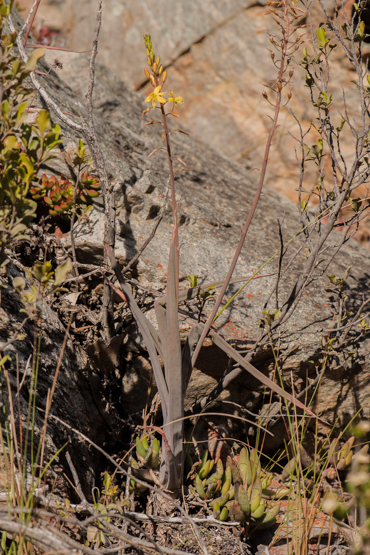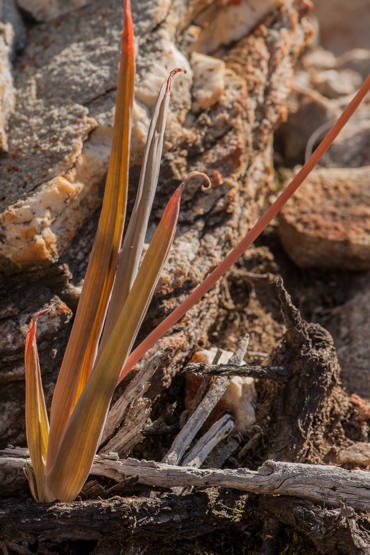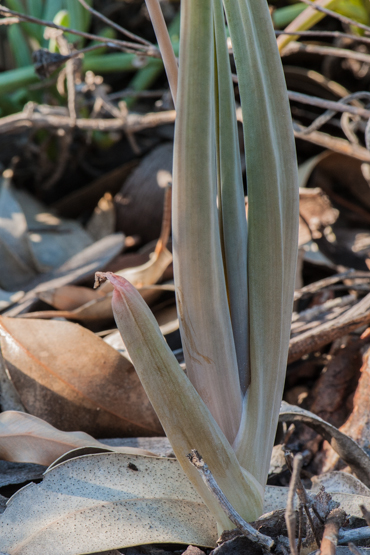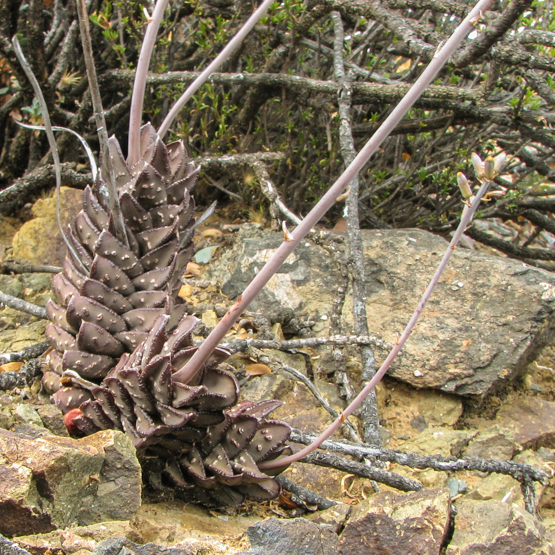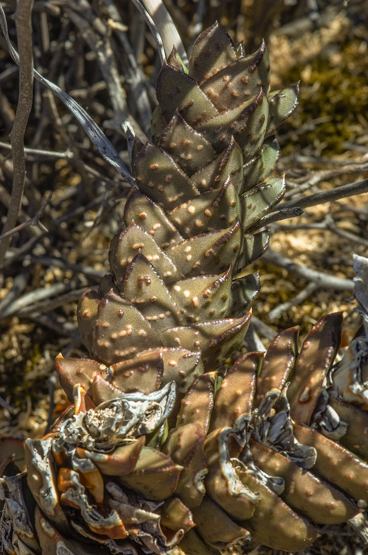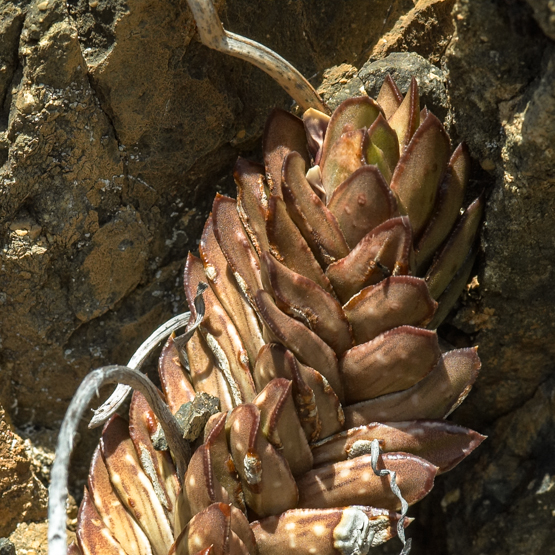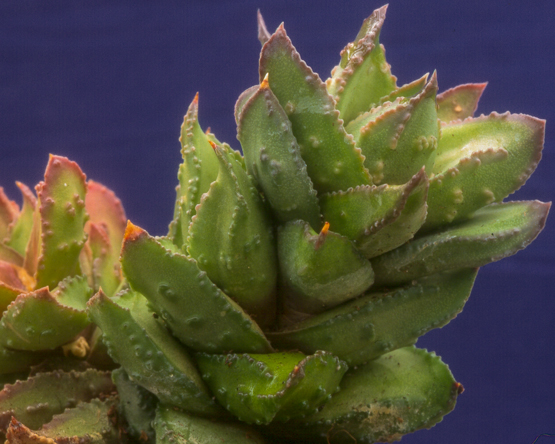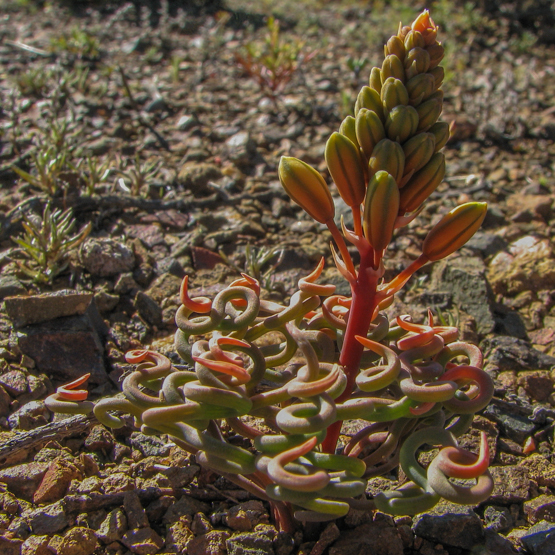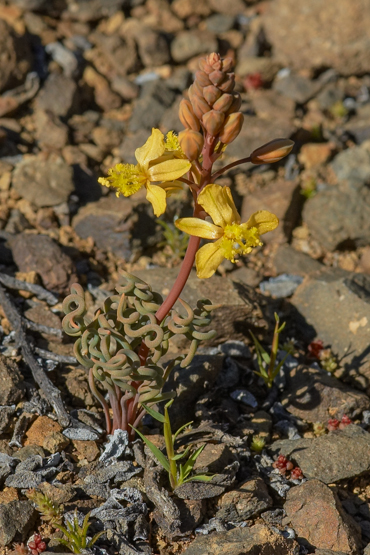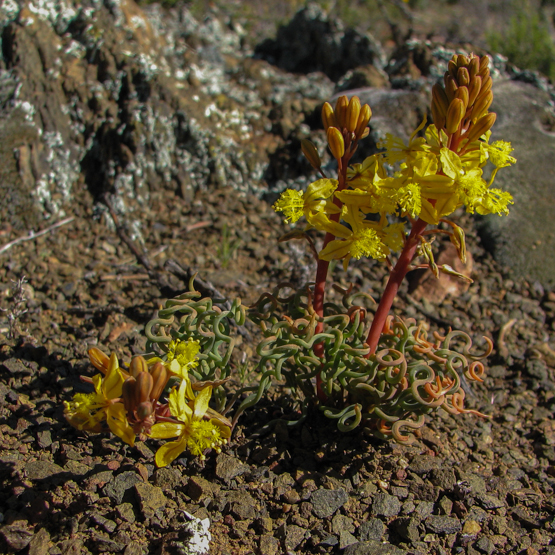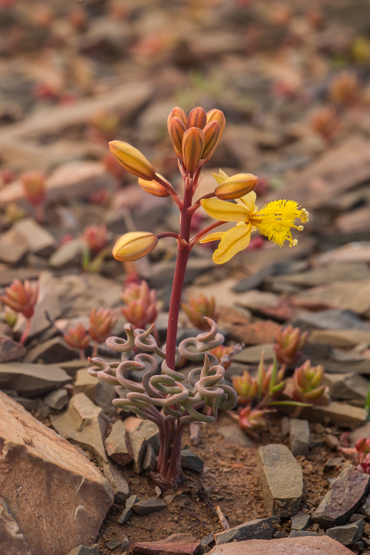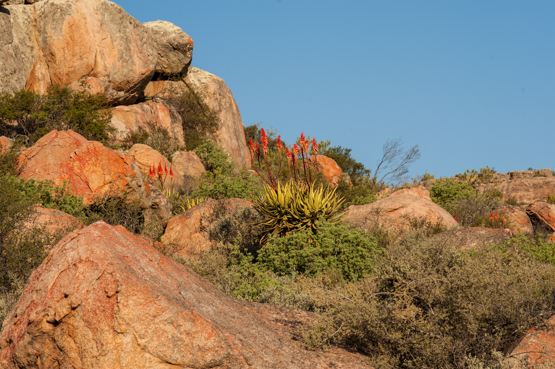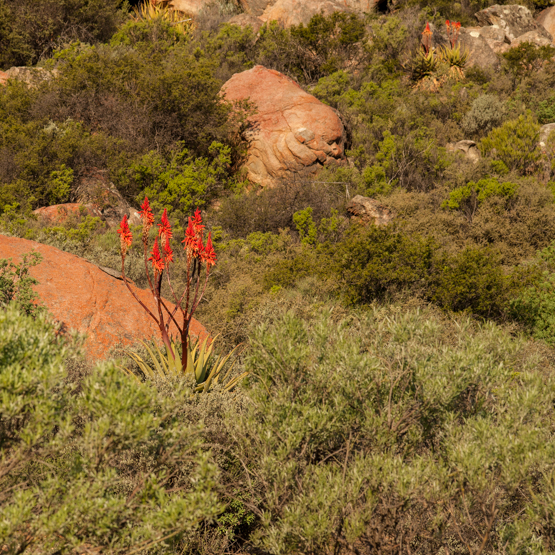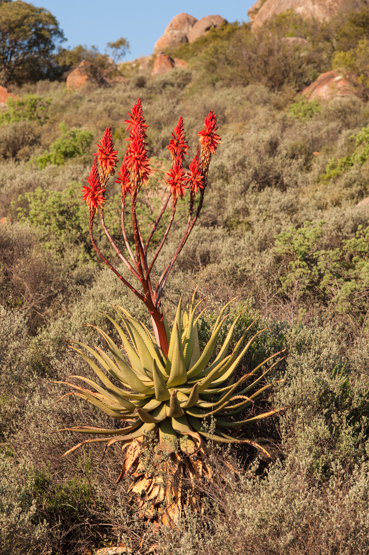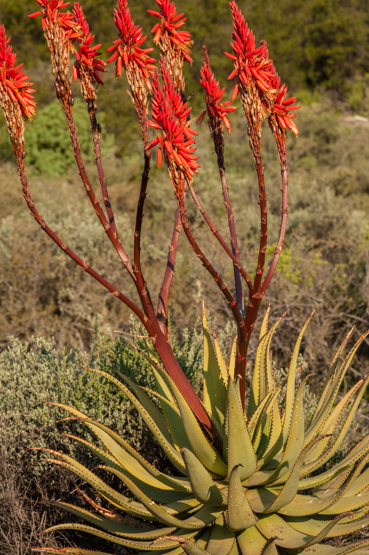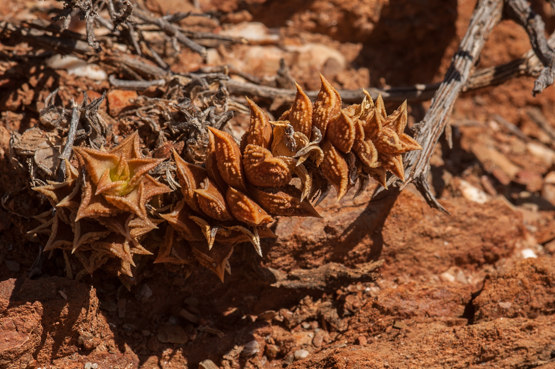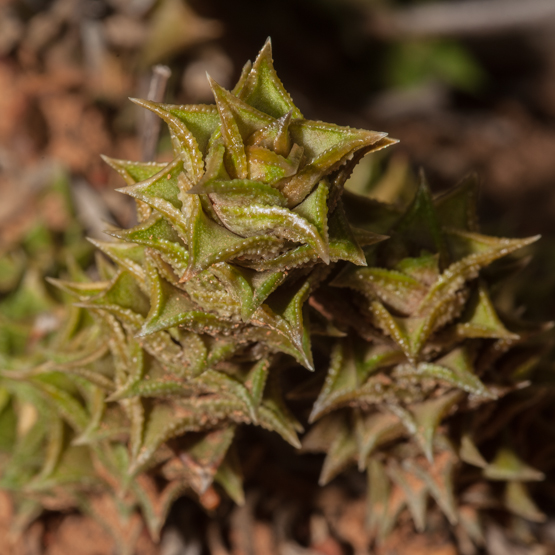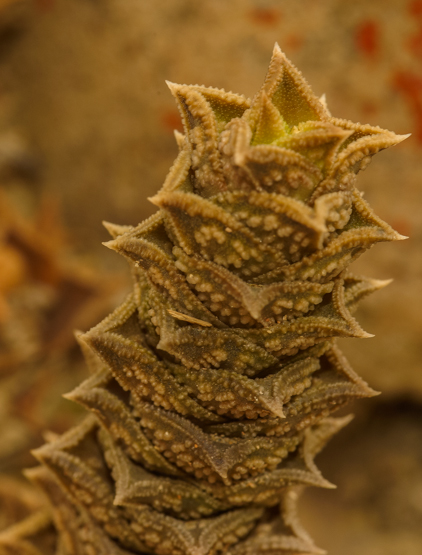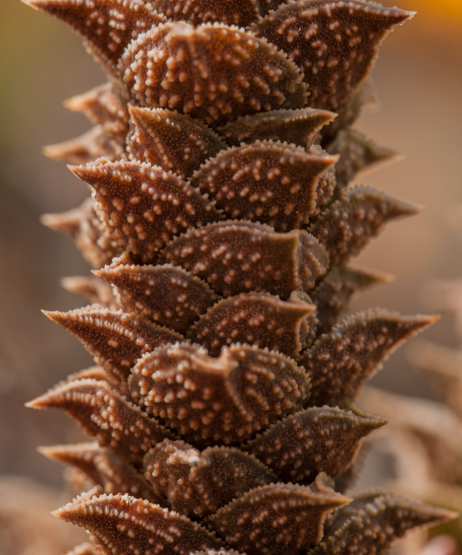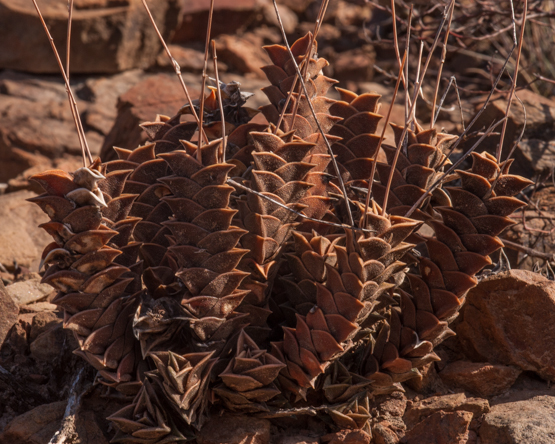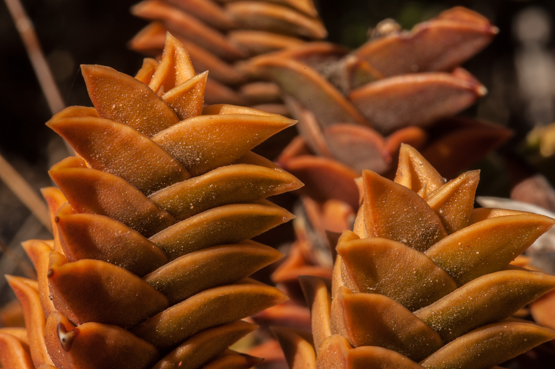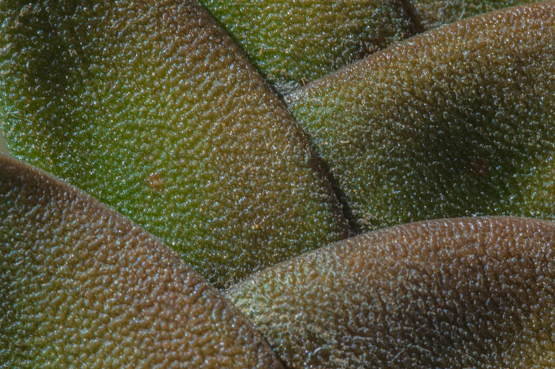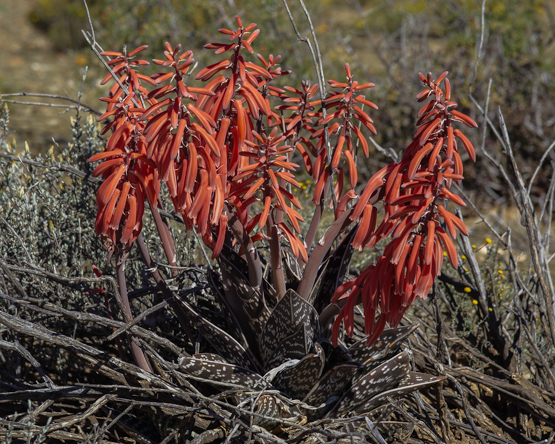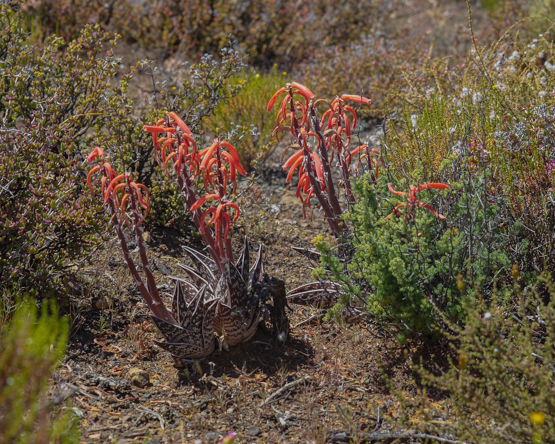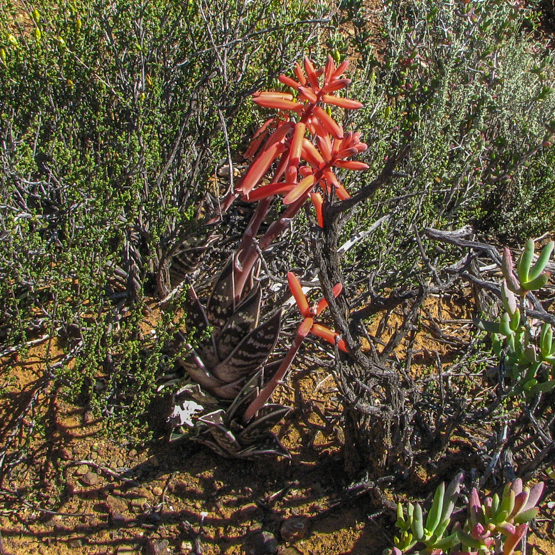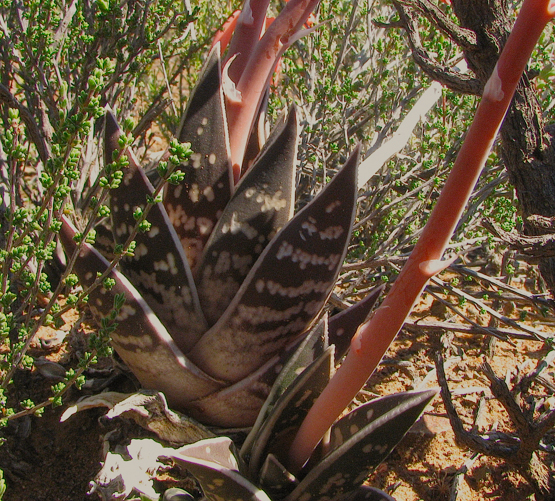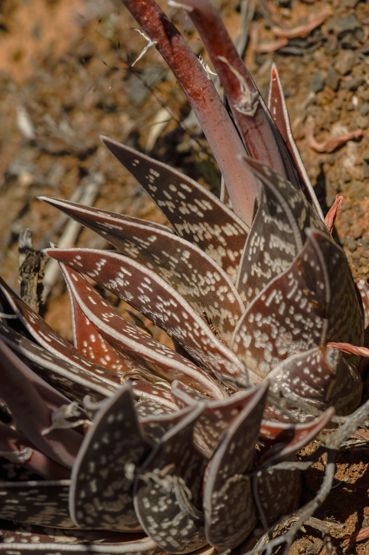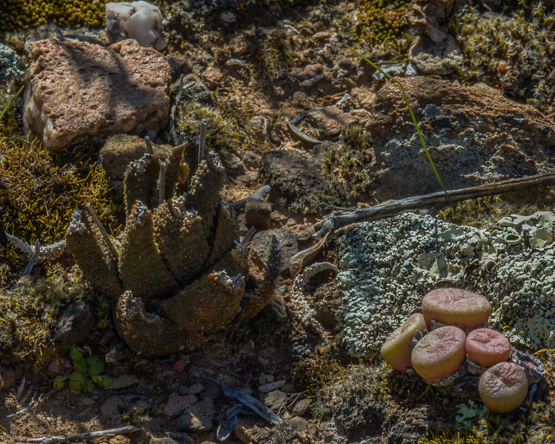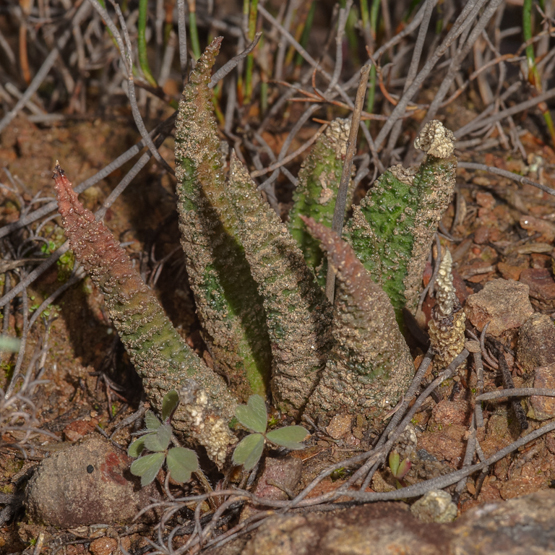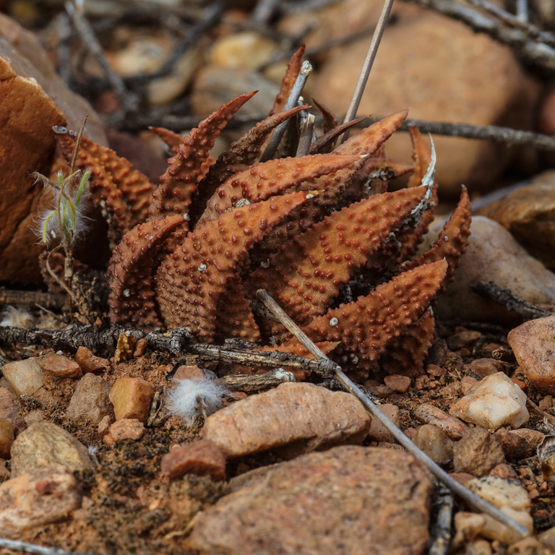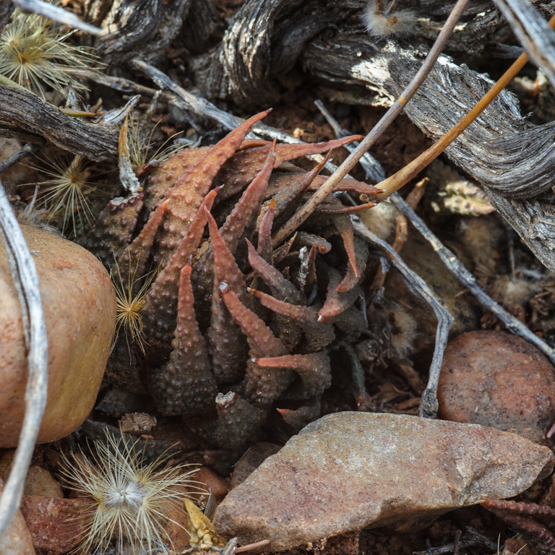Bulbines are easy to recognize as such when they are in flower. No other plants that I know of have the same peculiar bearded filaments. In general, the flowers are much of a muchness as to shape and colour (almost always yellow). This is one of the reasons many species are not easy to identify.
B. praemorsa is a common and widespread species, occurring from southern Namaqualand to the southwestern Cape, usually on sandy soils or rocky sandstone slopes.
The plants posses a small tuberous rootstock and long, thick and fleshy leaves that are deeply channeled above. The inflorescences are up to 60 cm tall, with yellow to orange or salmon-coloured flowers which appear from June to September.
Tag: Asphodelaceae (Aloaceae)
Astroloba bullulata
Most of the time this beautiful and distinctive species is not easy to find, not only because it is rather uncommon, but also because it prefers to grow in the shelter of shrubs. It branches only reluctantly and may reach a height of 30 cm.
The attractive flowers appear from November to June.
The main distribution area is from Sutherland to Ceres and Laingsburg. A locality near Bonnievale and one near Prince Albert are also mentioned in literature.
The last picture shows a plant in cultivation.
Bulbine torta (2)
Bulbine torta (1)
What sets these plants apart from other Bulbines are the peculiar, thread-like, usually coiled leaves. They appear from a flat-based underground tuber and are 3.5-12 cm long and about 1 mm wide. In cultivation they become both wider and straighter.
According to literature the plants occur on sandy and rocky places from Vanrhynsdorp and Calvinia southwards to Sutherland and Clanwilliam. However, all the photos here were taken on our farm near Matjiesfontein, about 100 kms south of Sutherland. The flowers appear from August to October.
Aloe khamiesensis
Astroloba corrugata
Unless they grow in deep shade (they are often found under shrubs), these plants commonly have a sickly orange-brown colour. One regularly sees the same phenomenon in some other species of Astroloba and Haworthia (see H. viscosa). The plants occur from Worcester to Ladismith and can be locally abundant. They are up to 20 cm tall. Doreen Court in her “Succulent flora of southern Africa” mentions a height of 30-80 cm, but this is probably a mistake. The flowers are produced in late spring and summer (Oct.-Feb.).
The picture of the flowers was taken in cultivation (scan from slide).
Gasteria bicolor v. bicolor
This plant is widely distributed in the eastern Cape and is typical for the subtropical thicket of the area. I has a short leafy stem up to 20 cm tall and slightly twisted leaves with a sharp off-center tip.
The inflorescence is quite impressive: 1-1.5 m tall, with up to 8 side-branches.
Pictures taken near Uitenhage, 25 Oct. 2012
Haworthia viscosa
Although rather variable, this species is easy to identify (H. nigra is the only other Haworthia in which the leaves are arranged in three ranks). The species is tall as Haworthias go: up to 30 cm. It is widely distributed from halfway between Laingsburg and Sutherland, throughout the central, eastern and southern Karoo and the Little Karoo, with an outlying habitat near Graaff-Reinet. In shade the plants are green, but one often encounters them in very arid places in full sun, where they usually become brownish, reddish or orange.
Aloe variegata
This beautiful and distinctive plant was one of the first Aloes to be successfully cultivated in Europe.
The Afrikaans common name is Kanniedood (cannot die), which may explain why one sees it often planted on graves. It is widely distributed in the dry parts of southern Africa.
The plants prefer stony ground in partial shade (I have never seen a more healthy plant than the one my mother used to grow on her shaded windowsill – and that was in in Holland, not a country known for it abundant sunshine to start with).

